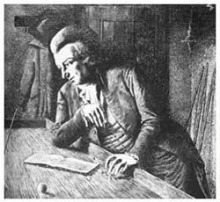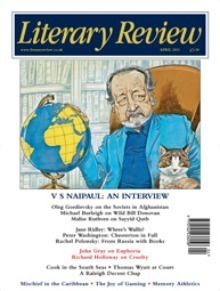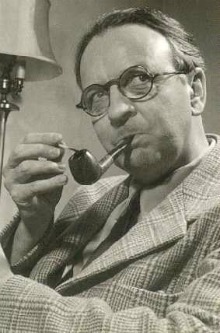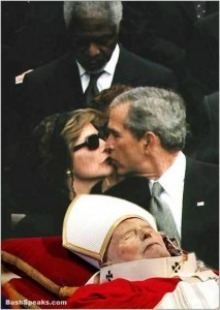Matt Rees's Blog - Posts Tagged "wolfgang-mozart"
Book publicity: the full set
 In the Royal Navy, there’s only one kind of facial hair allowed. British Tars are either clean shaven or they sport a beard, known in the service as a “full set.” The antipathy to the mustache is no doubt because of its predominance among the rival landlubber officer class (although it could’ve later been its association with a different kind of “sailor.”)
In the Royal Navy, there’s only one kind of facial hair allowed. British Tars are either clean shaven or they sport a beard, known in the service as a “full set.” The antipathy to the mustache is no doubt because of its predominance among the rival landlubber officer class (although it could’ve later been its association with a different kind of “sailor.”)Book authors now fall into similar categories. There are those who do nothing online and those for whom each book must be accompanied by the full set.
Those who do nothing are usually writers who were already well-known before the web became so important. They don’t need to be online, so they aren’t. Or they’re too old to get into a new kind of writing. Me, I have the internet full set. Here’s what I’ve got going on already for my new book, which is out in two weeks in the UK:
First there’s the updated website, www.mattrees.net. The website is, of course, the equivalent of facial stubble. Everyone’s doing it, even those who don’t get around to growing a full set. Some of them are pretty rotten and look like they’d itch… You can tell that the writer only sports the stubble because he thinks he has to – a fashion necessity. He’d get rid of it in a moment if the fashion changed.
I’m very involved in the design of my site. I put lots of Extra Features in it. You can hear much of the music from MOZART’S LAST ARIA, my new book. (It’s a historical thriller in which Mozart’s sister tries to uncover the secrets of the great composer’s death.) I have a couple of brief essays about how I came to write the book; how I researched it; how I structured it to mirror my favorite Mozart piano sonata. A photo tour of all the real locations featured in the novel, and images of many of the real characters from the book.
Read the rest of this post on my blog The Man of Twists and Turns.
Published on April 21, 2011 04:18
•
Tags:
caravaggio, crime-fiction, michael-caine, mick-jagger, mozart-s-last-aria, nannerl-mozart, orit-wolf, publicity, richard-burton, royal-navy, video, wolfgang-mozart, writers
My Mozart novel and the intifada
 If there had never been a Palestinian intifada, I might never have written my novel about the death of Mozart, MOZART’S LAST ARIA, which is published today in the UK by Corvus.
If there had never been a Palestinian intifada, I might never have written my novel about the death of Mozart, MOZART’S LAST ARIA, which is published today in the UK by Corvus.Of course, 4,000 people would also be alive who are now dead. In the course of writing about that destruction between 2000 and 2006, I saw some terrible things, experienced some frightful emotions, and internalized shocking facts about the world around me. It would’ve been easy to become depressed or to descend further into the post-traumatic stress disorder that nipped at my mind quite frequently.
Mozart saved me from that. I used to listen to his music in my armored car as I drove through the dangerous roads of the West Bank or on my iPod as I huddled in my Gaza hotel after a day dodging through refugee camps where Palestinians and Israelis were fighting it out. The Maestro’s great works soothed me, enabled me to achieve an emotional calm, when all around me was horror and chaos.
I didn’t use the music to ignore what was happening. Rather the music kept me open to the world around me. I didn’t have to shut out the horror; I could watch it and try to understand it. Because the great Wolfgang was sending me musical signals about the beauty and peace that exists at the core of every man. We only need listen to Mozart to know that he speaks to this part of us, and his immense popularity and immediacy is a sign that it truly is something we all possess.
There’s a good deal of research about Mozart’s music and its phenomenal ability to calm all kinds of disorders and, certainly, to soothe us when we’re stressed. Kids with attention-deficit disorder have been shown to concentrate better if Mozart is playing in their classroom. Epileptics are less likely to have seizures if they’ve been listening to Mozart (an element I worked into the plot of MOZART’S LAST ARIA.)
I found the last six symphonies were the most relaxing, and the piano sonatas. I think that’s because there’s an even greater clarity in these pieces than in some of Mozart’s other work. It’s also in these pieces that he hits the sonic frequencies particular to him which appear to be behind the curative effect of his music – frequencies scientists have found NOT to occur in other great composers like Beethoven or Brahms. (Listen to those other guys and it’ll be good for you, but it won’t really calm you and it certainly doesn’t have the same effect on A.D.D. or epileptics.)
Read the rest of this post on my blog The Man of Twists and Turns.
Published on May 01, 2011 00:28
•
Tags:
book-launch, crime-fiction, gaza, historical-crime, historical-fiction, intifada, ipod, israel, israelis, middle-east, mozart-s-last-aria, mozart-s-sister, murder-mystery, nannerl-mozart, palestinians, west-bank, wolfgang-amadeus-mozart, wolfgang-mozart
MOZART'S LAST ARIA: the video
For today's release of my new historical crime novel MOZART'S LAST ARIA in the UK, take a look at this two-minute video introducing the book. It features my son dressed as Little Mozart, because I'm even more proud of him than I am of the book... Watch more videos about the book.
Published on May 01, 2011 00:32
•
Tags:
book-video, crime-fiction, historical-crime, historical-fiction, mozart, mozart-s-last-aria, mozart-s-sister, nannerl-mozart, video, vienna, wolfgang-mozart
Amadeus, Murder and the real Mozart
 The long wait for a successor to Amadeus is over. In fact, my new novel MOZART’S LAST ARIA answers questions about the great composer’s death that are far more deeply rooted in historical research than Peter Shaffer’s nonetheless terrific play.
The long wait for a successor to Amadeus is over. In fact, my new novel MOZART’S LAST ARIA answers questions about the great composer’s death that are far more deeply rooted in historical research than Peter Shaffer’s nonetheless terrific play.Shaffer, whose play was first performed in 1979 and filmed by Milos Forman in 1984, proposed court composer Salieri as the man who killed Mozart at the age of 35. (Actually, Shaffer’s play was largely based on a play from the 1830s by the Russian poet Alexander Pushkin.) The truth behind the Salieri murder myth is that when the court composer claimed to have killed Mozart, he was incarcerated in a lunatic asylum. Once he regained his sanity, however, he refuted the story as something he had made up in his madness.
My novel also rescues Wolfgang from the popular perception (rooted in Amadeus) that he was some kind of giggling buffoon who just happened to write angelic music. Far from it, Wolfgang’s letters and his friends’ recollections show that he was a deep thinker who had great admiration for Enlightenment ideals (something that would’ve put him in jeopardy with the Emperor’s spies much greater than the risk he faced from Salieri’s jealousy). Clearly he was excitable immediately after musical performances, but then The Rolling Stones have been known to drop tv sets out of tenth-floor hotel rooms to let off steam and they’re no Mozarts.
The Wolfgang I’ve come to know from my research and from an intense listening of his music was no fool. He was one of the great minds of history, and I hope my novel will rescue his reputation as an intellectual whose concern for his fellow man was rooted deep in a profoundly caring, warm personality.
As for his murder, Mozart believed he was being poisoned. Six weeks before he died, he was promenading in the Prater Gardens of Vienna with his wife Constanze. He told her he had been poisoned, that he was to be sacrificed and knew he would die. His wife tried to cheer him up, but the conviction that he had been poisoned remained with him until his death in early December 1791.
The premise of my novel MOZART’S LAST ARIA is that Nannerl, Wolfgang’s gifted sister, learns of her brother’s belief that he had been poisoned and travels to Vienna to find out the truth. (In fact, she never went to Vienna after his death, though she lived a further 37 years in and around Salzburg.)
Read the rest of this post on my blog The Man of Twists and Turns.
Published on May 02, 2011 00:23
•
Tags:
amadeus, crime-fiction, historical-crime, historical-fiction, milos-forman, movies, mozart-s-last-aria, nannerl-mozart, peter-shaffer, salieri, tom-hulce, wolfgang-amadeus-mozart, wolfgang-mozart
Mozart Scene of the Crime
 Historical novelists recreate the emotions and events of distant times. It helps if they can use real places that still exist. In the case of MOZART’S LAST ARIA, I was able to set much of the action in streets and buildings where Mozart lived and worked – and where you can still visit.
Historical novelists recreate the emotions and events of distant times. It helps if they can use real places that still exist. In the case of MOZART’S LAST ARIA, I was able to set much of the action in streets and buildings where Mozart lived and worked – and where you can still visit.In my historical thriller, the composer’s sister Nannerl comes to Vienna to investigate her suspicion that Wolfgang was poisoned. One of the men who helps her is Baron Gottfried van Swieten, an important patron of her brother. Swieten was Imperial Librarian, and you can see the majesty and learning of that time arrayed on the shelves of the Prunksaal, the great library attached to the Hofburg, the Emperors’ palace in central Vienna.
The library is open to the public, but you’ll rarely find more than five or six other visitors there at one time – most people are shuffling with the crowds through the Emperor’s rooms down the way. It’s a gem hidden in rather plain site.
The house where Mozart died was destroyed some time ago (though you can visit a museum in the house where he wrote The Marriage of Figaro nearby). There’s a department store there now, on Rauhenstein Lane. But if you stand with your back to the spot, you can look to your left, your right, and in front of you, and you’ll see just what Wolfgang would’ve seen – except there’ll be less horse manure on the streets. Much of central Vienna remains just as it was in Mozart’s time.
Despite its destruction, I was able to describe the interior of Mozart’s home quite fully, however. There have been a number of academic theses written about the furniture and layout of the apartment. Yes, really. (Some years ago, the startling discovery was made that not only did he have two windows on the front of his studio, but he also had another one on the side. You get a Ph.d. for this stuff, you know. But anyway I’m very grateful to those dedicated Mozartians.)
You can look at a photo tour of other Mozart sites and locations from MOZART’S LAST ARIA in Vienna on my website.
Read the rest of this post on my blog The Man of Twists and Turns
Published on May 02, 2011 23:36
•
Tags:
amadeus, austria, classical-music, crime-fiction, czech-republic, historical-crime, historical-fiction, mozart-s-last-aria, nannerl-mozart, prague, vienna, wolfgang-amadeus-mozart, wolfgang-mozart
The Music Behind my Mozart Novel
 The best reason I have for writing a novel about Mozart must surely be that I love his music. Other elements contribute, including my fascination with his neglected sister and the growing historical research which I believe points toward his murder. But the music must be at the center of the novel itself.
The best reason I have for writing a novel about Mozart must surely be that I love his music. Other elements contribute, including my fascination with his neglected sister and the growing historical research which I believe points toward his murder. But the music must be at the center of the novel itself.I’ve played music all my life. But after my initial music lessons I eschewed the playing of classical music – no more Etudes by Heller for me. I’ve been a guitarist and bassist in various rock bands. Less sexily, I played glockenspiel in my high school band.
So for MOZART’S LAST ARIA, my new historical thriller in which Wolfgang’s sister Nannerl investigates his death in Vienna, 1791, I decided to learn to play piano. This showed me two things: first that I’m not much good on the piano; and second a way to see inside Wolfgang’s music, because the piano study made me think more deeply about musical theory than rock guitar. (Surely THAT doesn’t surprise anyone, but it was worth demonstrating anyhow.)
My guide in this was my dear friend Orit Wolf, a fabulous concert pianist who lives in Jaffa (You can see her dressed up as Nannerl and hear her version of Mozart’s Fantasia in D on this video). Orit’s probably best known for her heartfelt interpretations of romantic composers. When she plays Chopin or Schubert, I challenge you to stay on your feet, so emotional and breathtaking is it. But her insights into Mozart are stupendous. Our discussion of Wolfgang’s piano sonata in A minor I remember in particular. It gave me the idea of building the entire novel around the mood and structure of that piece.
Orit also introduced me to some of the techniques great musicians use when they prepare for a performance. For example, she told me that when she first looks at a piece for a performance she decides what color the music makes her think of. Before each performance, she’ll visualize that color and it will create a mood in her, and in turn that mood will be reflected in the music as she plays it. It isn’t just about hitting the right keys.
I had a similar talk with the great conductor Zubin Mehta (in which he was very frank about the lack of worth of certain composers who’ll remain nameless). He was very clear about who the greatest of them all is. “I’d find it very hard to live without Mozart,” he told me.
Read the rest of this post on my blog The Man of Twists and Turns.
Published on May 03, 2011 23:13
•
Tags:
classical-music, crime-fiction, don-giovanni, estates-theater, historical-crime, historical-fiction, historical-thriller, mozart, mozart-s-last-aria, music, nannerl-mozart, orit-wolf, prague, south-africa, staatsoper, the-magic-flute, vienna, wolfgang-amadeus-mozart, wolfgang-mozart, zubin-mehta
Guest Blogger Wolfgang Mozart: I always said I was poisoned
 At last. It took 220 years, but finally someone has told my story. I always said I was poisoned.
At last. It took 220 years, but finally someone has told my story. I always said I was poisoned.MOZART’S LAST ARIA came out this week in the UK. It’s a historical thriller by the British writer Matt Rees. I don’t mind that the Mozart of the title is my sister Nannerl – I always thought she deserved more recognition than she got. No, I don’t mind that at all, because Rees confirms for me what I felt sure of all along: I was poisoned.
I told my wife that I was sure of this six weeks before I died. It was October 1791. We were in the Prater Gardens in Vienna. I sat on a bench and said, “Constanze. I know I’ve been poisoned. I’m to be a sacrifice.”
She told me I was being a hypochondriac and that I ought to buck up from this melancholy. I pointed out that a hypochondriac thinks he’s ill. She couldn’t think of a word for someone who thinks he’s a murder victim.
I tried hard to cheer up. Tried so hard, even though I felt like I was shitting oranges every time I smiled (Readers of my collected letters will remember my penchant for naughty phrases like that. I haven’t grown out of them even after two centuries in the grave.) I did cheer up here and there, but soon enough I’d feel the pain in my kidneys and I knew they had done for me…
Who’re they? You’ll have to read MOZART’S LAST ARIA to find out. But Rees has taken advantage of all the new historical research which shows what I had been up to. And how dangerous it was.
You see, I wasn’t just a musician. Certainly I wasn’t the buffoon some people like to think I was, either. No, I was committed to the new ideas of equality and brotherhood promulgated by the Enlightenment. That was prettyrisky in Vienna back then. After all, the Enlightenment provided the ideas behind the French Revolution, and in Paris our Emperor’s sister Marie Antoinette was about to pay the price of equality.
I was a member of a lodge of Freemasons. The Emperor had made us more or less illegal. Lots of my brethren quit the Masons. I started writing songs for the lodge meetings and, well, I’m not giving away too much about Rees’s novel when I say that I had an idea for a new Masonic lodge, even though the Emperor had decreed there be no new lodges and the Imperial Secret Police was breathing down the Masons’ necks.
Read the rest of this post on my blog The Man of Twists and Turns.
Published on May 04, 2011 22:43
•
Tags:
crime-fiction, enlightenment, freemasons, guest-blogger, historical-fiction, historical-thriller, mozart-s-last-aria, nannerl-mozart, prater-gardens, vienna, wolfgang-amadeus-mozart, wolfgang-mozart
Literary Review: MOZART'S LAST ARIA 'lively, well-researched, very clever'
 In the current edition of London's Literary Review, Jessica Mann leads her roundup of new crime novels with this praise for MOZART'S LAST ARIA, my historical thriller about the great composer's death: "Matt Rees has drawn a lively portrait of eighteenth-century Vienna and of characters whose names now live only because of their connection with the composer. This novel is well-researched, very clever and written in clean, suitably formal language...This is an even better mystery novel than the author's prize-winning series about the Palestinian detective Omar Yussef--and that's saying a lot."
In the current edition of London's Literary Review, Jessica Mann leads her roundup of new crime novels with this praise for MOZART'S LAST ARIA, my historical thriller about the great composer's death: "Matt Rees has drawn a lively portrait of eighteenth-century Vienna and of characters whose names now live only because of their connection with the composer. This novel is well-researched, very clever and written in clean, suitably formal language...This is an even better mystery novel than the author's prize-winning series about the Palestinian detective Omar Yussef--and that's saying a lot."
Published on May 10, 2011 00:24
•
Tags:
crime-fiction, historical-fiction, historical-thriller, literary-review, middle-east, mozart-s-last-aria, nannerl-mozart, omar-yussef, palestine, palestinian, reviews, vienna, wolfgang-amadeus-mozart, wolfgang-mozart
Long gestation and the crime novel
 Crime novelists generally write a novel a year. It’s what publishers want. Some big writers—and I mean, 25 million books sold—have told me their publishers and agents complain that if they don’t produce a book a year their readers will forget them.
Crime novelists generally write a novel a year. It’s what publishers want. Some big writers—and I mean, 25 million books sold—have told me their publishers and agents complain that if they don’t produce a book a year their readers will forget them.In the case of such writers, some of those 25 million may have degenerative diseases and others may be plain stupid, but in all likelihood about 24 million of them will remember a writer whose book they read, let’s say, two years ago.
Nonetheless the expectation remains that a book a year will be forthcoming. So do all crime writers have one good idea a year? Or do ideas take longer to gestate? And if they do, where does that leave the writer who needs to get words on paper right now.
In the case of my latest novel MOZART’S LAST ARIA (out now in the UK, but not until November in the US), it was eight years between the initial idea and publication. A most un-crime-fiction-like timescale.
It began with a trip I took with my wife into the Salzkammergut, to find peace among the mountains and lakes at a time when we were living through the Palestinian intifada in Jerusalem. There we stumbled across the remote house where Mozart’s sister Nannerl had lived and a fascination with her was born.
It was nurtured through future visits to Vienna, to Prague (where Mozart’s operas are still performed in the Estates Theater, scene of his “Don Giovanni” premier), dinners with Maestro Zubin Mehta at which we discussed our mutual admiration for the great composer (though it shan’t surprise you to learn that his understanding of the music is on a somewhat, ahem, more elevated level than mine…)
Read the rest of this post on my blog The Man of Twists and Turns.
Published on May 18, 2011 23:55
•
Tags:
austria, brooklyn, crime-fiction, detective-fiction, evan-fallenberg, intifada, jerusalem, little-palestine, mozart-s-last-aria, nannerl-mozart, palestine, piano, prague, research, salzkammergut, vienna, wolfgang-amadeus-mozart, wolfgang-mozart, writers, zubin-mehta
Sexy classical music and crime novels
 When Peter Cook admitted to Dudley Moore that he was “turned on by dead Popes,” it was a satire on those among us who’re so bored by their lives as to be infinitely suggestible. Thus a dead pope lying on a catafalque in white robes looks “at peace, at rest, and ****ing fanciable.”
When Peter Cook admitted to Dudley Moore that he was “turned on by dead Popes,” it was a satire on those among us who’re so bored by their lives as to be infinitely suggestible. Thus a dead pope lying on a catafalque in white robes looks “at peace, at rest, and ****ing fanciable.”The joke, of course, is that no one could imagine the Pope as a sexual object, whether alive or dead. The same might be thought to be true of classical musicians. While Shakira shakes her “fanciable” ass on every video, classical musicians are supposed to be much stuffier.
However, during the research for my new historical thriller MOZART’S LAST ARIA I discovered that the sexiest performers today are not the booty-shaking R’n’B divas, nor the pouting rockers (none of them has ever been able to compete with Joan Jett.) They’re the opera singers and clarinetists and pianists.
Followers of my blog The Man of Twists and Turns will have seen a couple of videos featuring the music from MOZART’S LAST ARIA performed by current musicians. I cite them here to prove my point. Check out Diana Damrau and tell me that when you hear this beautiful blonde Bavarian singing Mozart (as she does on her homepage), you don’t feel a stirring in areas you might have thought were as dormant as a dead Pope. She’s also evidence that the days of the fat lady singing are over. Opera divas are quite gorgeous these days.
Or there’s the Israeli clarinetist Sharon Kam who appears in a video on my blog playing another of the pieces from my novel. A prominent performer around Europe, she’s much more expressive on stage in her body movements than most soloists. I will stop here before I get into further Cook-and-Moore territory with comments about the shape of the clarinet and where the soloist places it… (And after all Spike Milligan’s orchestral penis substitute was a different woodwind which he dubbed “Pink Oboe.”)
This is all more than idle comment on a few good-looking women, of course. There’s an important artistic point to be made. And now that I’ve given you links to what Pete and Dud would’ve called “the crumpet,” I shall make that artistic point.
Read the rest of this post on my blog The Man of Twists and Turns.
Published on June 03, 2011 03:08
•
Tags:
ad-nauseam, bbc, classical-music, crime-fiction, dead-popes, diana-damrau, dudley-moore, historical-fiction, joan-jett, mozart-s-last-aria, nannerl-mozart, orit-wolf, peter-cook, sharon-kam, spike-miligan, vienna, wolfgang-amadeus-mozart, wolfgang-mozart



